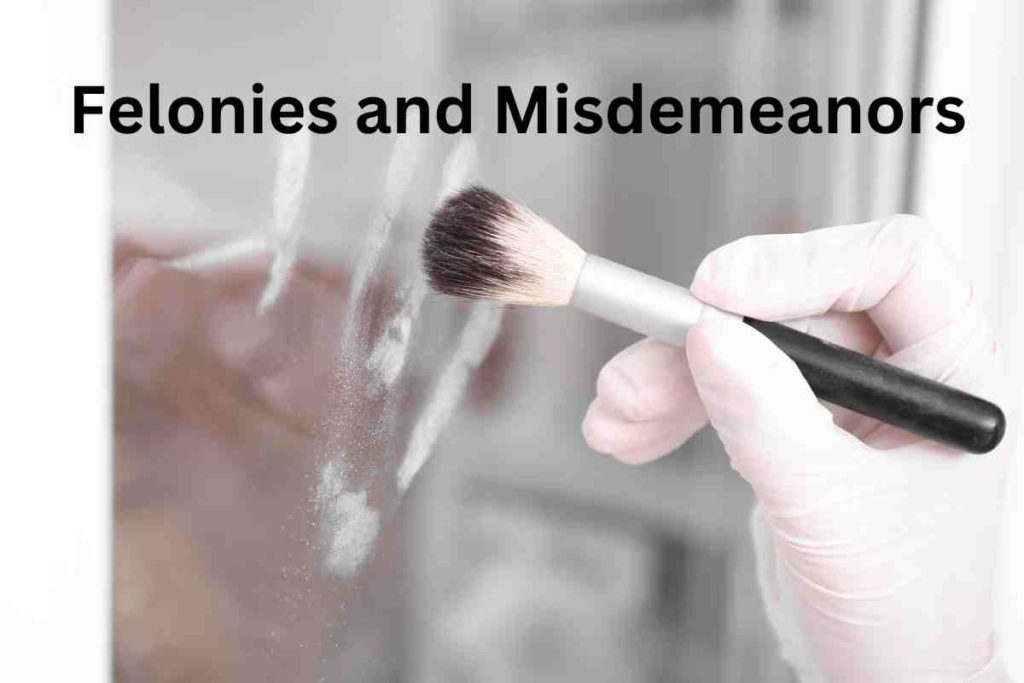In criminal law, offenses are classified into felonies and misdemeanors. But what differentiates these two terms, and why does it matter? Understanding the distinction is fundamental to navigating the legal landscape and recognizing the gravity of different criminal charges.
Defining the Terms: Felonies and Misdemeanors
Step into the world of criminal law, and you’ll find it divided into two distinct neighborhoods: felonies and misdemeanors. But what exactly separates these two districts? Essentially, the severity of the crime and the subsequent punishment set them apart. Picture felonies as high-rise buildings, imposing and severe. They represent serious crimes like murder, rape, or arson and come with correspondingly serious consequences, typically involving a prison sentence of over a year, hefty fines, or even the death penalty in certain jurisdictions. Misdemeanors, on the other hand, are more akin to smaller townhouses. They represent lesser offenses, such as petty theft, minor assault, or traffic violations. The punishment for misdemeanors is less severe, often resulting in a jail term of less than a year, more minor fines, or community service. In the grand scheme of criminal law, understanding the difference between these two terms is like having a roadmap to navigate the landscape of offenses and their respective punishments.
Understanding the Consequences: Penalties and Beyond
The consequences of criminal actions extend far beyond the immediate penalties – they are like ripples in a pond, spreading out and affecting various aspects of a person’s life. Picture a felony conviction as a large stone thrown into the pond of someone’s life. The immediate splash is the severe penalty, often a lengthy prison sentence or substantial fines. But the ripples? They are the long-term repercussions that follow, including the potential loss of certain civil liberties like voting rights, difficulty in finding employment due to a felony record, and even challenges in securing housing. Although generally regarded as less severe, misdemeanors are not without consequences. They might be smaller pebbles, but they still cause ripples. These could include short-term incarceration, fines, probation, or community service. Furthermore, a misdemeanor conviction can lead to a criminal record, which might affect future employment, and even tarnish one’s reputation. Understanding these repercussions isn’t just about comprehending the criminal law; it’s about recognizing the profound impact a criminal conviction can have on an individual’s life trajectory.
Notable Examples: A Look at Specific Crimes
To truly grasp the distinction between felonies and misdemeanors, it’s helpful to dive into some real-world examples – think of it as a guided tour of a criminal law museum, where each crime is an exhibit. On the felony side, we have exhibits displaying severe crimes like murder, where one person intentionally causes the death of another; rape, a serious violation involving sexual intercourse conducted against a person without their consent; and kidnapping, involving the unlawful confinement of a person against their will. Each of these crimes is akin to the major exhibits in our museum – striking in their severity and the significant penalties they attract. Turning to the misdemeanor wing, the exhibits showcase less severe offenses. These might include petty theft, which is the unlawful taking of property of relatively low value; public intoxication, a disruptive behavior involving excessive alcohol or drug consumption; and minor traffic offenses, such as speeding or failing to signal when changing lanes. These crimes are akin to the smaller exhibits in our museum – less severe yet still crucial for maintaining law and order in society. Understanding these specific examples can clarify the differences between felonies and misdemeanors in the vast gallery of criminal law.
Wobbler Offenses: The Gray Area between Felonies and Misdemeanors
In the realm of criminal law, a unique category of crimes blurs the clear-cut boundary between felonies and misdemeanors. Picture these crimes as chameleons, able to adapt their classification depending on the circumstances. They are known as “wobbler” offenses. This intriguing term paints an apt picture of crimes that wobble or oscillate between being treated as a felony or a misdemeanor. How a wobbler is classified often depends on the case’s specifics- the offense’s minute details, the defendant’s prior criminal history, and even the prosecutorial discretion. For instance, a crime like assault could be a wobbler, morphing into a felony or remaining a misdemeanor based on the severity of the injury, the use of a weapon, or the victim’s identity. Wobblers highlight the inherent flexibility and complexity within the criminal law system, serving as a reminder that not all crimes can be neatly categorized into fixed boxes. They signify the delicate balancing act the legal system performs in doing justice.
Conclusion: The Impact of Criminal Classification on Society
The distinction between felonies and misdemeanors is crucial to the functioning of the criminal justice system and carries significant societal implications. As society continues to evolve, so will our understanding and definition of these terms. Navigating the nuances of these criminal classifications is not just a legal necessity but also a pathway toward a more informed and just society.


